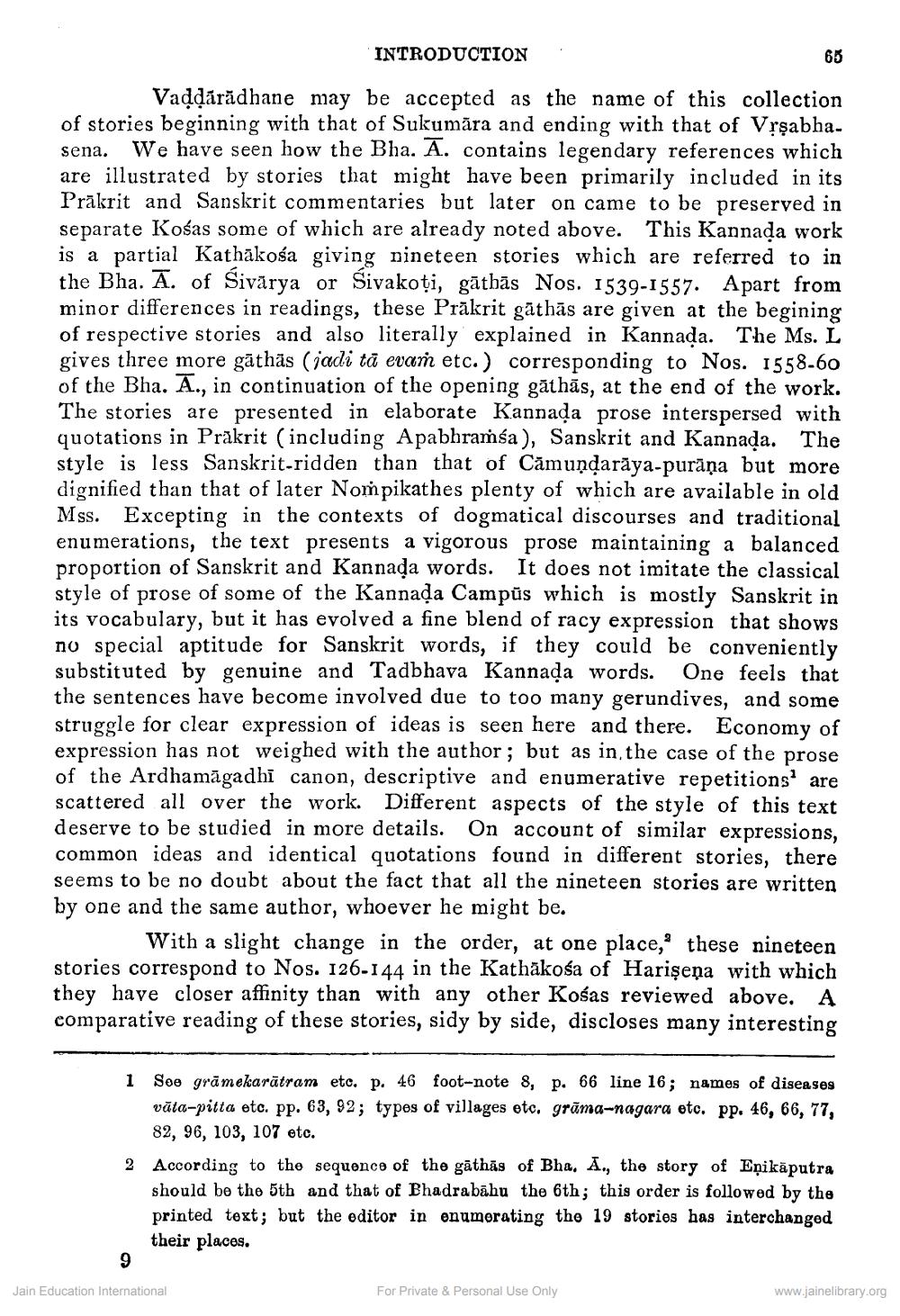________________
INTRODUCTION
sena.
Vaḍḍārādhane may be accepted as the name of this collection of stories beginning with that of Sukumara and ending with that of VṛṣabhaWe have seen how the Bha. A. contains legendary references which are illustrated by stories that might have been primarily included in its Prakrit and Sanskrit commentaries but later on came to be preserved in separate Kośas some of which are already noted above. This Kannada work is a partial Kathakośa giving nineteen stories which are referred to in the Bha. A. of Śivarya or Sivakoti, gāthās Nos. 1539-1557. Apart from minor differences in readings, these Prakrit gathās are given at the begining of respective stories and also literally explained in Kannada. The Ms. L gives three more gathās (jadi ta evam etc.) corresponding to Nos. 1558-60 of the Bha. A., in continuation of the opening gathās, at the end of the work. The stories are presented in elaborate Kannada prose interspersed with quotations in Prakrit (including Apabhraṁśa), Sanskrit and Kannada. The style is less Sanskrit-ridden than that of Cămuṇḍaraya-purāņa but more dignified than that of later Nompikathes plenty of which are available in old Mss. Excepting in the contexts of dogmatical discourses and traditional enumerations, the text presents a vigorous prose maintaining a balanced proportion of Sanskrit and Kannada words. It does not imitate the classical style of prose of some of the Kannada Campus which is mostly Sanskrit in its vocabulary, but it has evolved a fine blend of racy expression that shows no special aptitude for Sanskrit words, if they could be conveniently substituted by genuine and Tadbhava Kannada words. One feels that the sentences have become involved due to too many gerundives, and some struggle for clear expression of ideas is seen here and there. Economy of expression has not weighed with the author; but as in the case of the prose of the Ardhamagadhi canon, descriptive and enumerative repetitions are scattered all over the work. Different aspects of the style of this text deserve to be studied in more details. On account of similar expressions, common ideas and identical quotations found in different stories, there seems to be no doubt about the fact that all the nineteen stories are written by one and the same author, whoever he might be.
With a slight change in the order, at one place, these nineteen stories correspond to Nos. 126-144 in the Kathakosa of Hariṣeņa with which they have closer affinity than with any other Kosas reviewed above. A comparative reading of these stories, sidy by side, discloses many interesting
65
1
See grāmekarātram etc. p. 46 foot-note 8, p. 66 line 16; names of diseases vata-pitta etc. pp. 63, 92; types of villages etc. grāma-nagara etc. pp. 46, 66, 77, 82, 96, 103, 107 etc.
2 According to the sequence of the gathas of Bha. A., the story of Enikaputra should be the 5th and that of Bhadrabahu the 6th; this order is followed by the printed text; but the editor in enumerating the 19 stories has interchanged their places.
9
Jain Education International
For Private & Personal Use Only
www.jainelibrary.org




